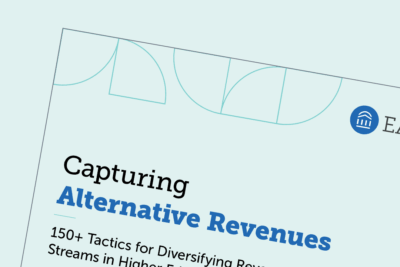4 Building Blocks of a Continuous Improvement Culture
Process improvement is a proven method of redesigning and transforming sub-optimal workflows. Veterans of process reengineering attest to the value of beginning the journey by tackling universally frustrating processes that can be quickly fixed. Securing these early wins helps to generate buy-in and whet the appetite among stakeholders for even more improvements.
As interest and engagement in process improvement grows, it’s critical to transition from success with one-off projects—digitizing a procurement workflow here, standardizing an HR form there—to a more widespread culture of continuous improvement.
Once the proverbial low-hanging fruit has been picked, mission- or margin-critical processes will likely rise to the top of the process improvement docket. At this point, the work is likely to become more difficult.
The likelihood of success can be amplified by investing in and cultivating a continuous improvement culture, which begins with four building blocks:
- Process improvement czar
- Embedded process improvement experts
- Cross-campus executive support
- Spirit of celebration
Building block #1: Process improvement czar
Campuses with multiple process improvement projects underway often find themselves in need of a dedicated coordinator to manage the various workstreams, particularly as the projects grow in complexity. The benefits of recruiting a process improvement “czar” for this role are three-fold:
- First, the czar can afford to have a one-track mind, dedicating all of his or her time to the strategic work of assembling process improvement teams, conducting training, working with various stakeholders, coordinating technology solutions with IT, and more.
- Second, when given an appropriate level of authority, the czar can operate as a silo-buster, cultivating an end-to-end perspective beyond the blinders of any one unit. Placing process improvement initiatives within the purview of HR or IT, for example, can lead to the perception on campus that it is just another localized initiative.
- Third, rather than relying on outside consultants that swoop in, make changes, and disappear, the czar can foster local expertise and partnerships. The avoided costs of third-party solutions are an added benefit.
There are likely ideal candidates for a process improvement czar on campus right now. You’re looking for someone with an understanding of university business systems, project management skills, an analytical mindset, perhaps some technical exposure, and an ability to effectively communicate and garner buy-in across divisions.
Why is this investment important? In the private sector, where 75% of companies are deploying some process improvement strategy to transform their organizations, there’s only a 10% success rate among companies without dedicated resources. It’s almost impossible to get something from nothing.
Building block #2: Embedded process improvement experts
Not all expertise in process improvement must come via full-time staff. The second building block of a continuous improvement culture comes from embedding process improvement capabilities across campus, empowering staff in their home units to actively look for opportunities to improve the efficiency and service quality of daily workflows. Additionally, these staff are prepared to support more complex, end-to-end process redesigns as needed.
There are many avenues for creating this embedded cadre of process improvement experts. Institutions have discovered willing instructors to lead training in this new set of skills in the business or engineering schools, or executive education unit. Nearby hospitals or health care organizations may offer similar programs. Large cities often have process improvement clubs or organizations; for example, British Columbia Institute of Technology partnered with a local business group, Lean Sensei, to train a handful of “black belts” who could then return to campus to teach Lean 101 courses. Further afield, online training programs have also been helpful in bringing expertise to campus.
The chart below highlights institutions with robust, campus-wide process improvement initiatives. Most notably, they all operate with minimal central staff. Most of these offices started small and have remained small. In other words, the process improvement initiatives haven’t scaled up in terms of FTEs working in a central office, but rather in the number of staff embedded throughout the institution who have been trained to contribute to improvement projects.
Embedding process improvement capabilities that facilitate cultural shifts
| School | Central FTEs at start | Current central FTEs | PI-trained staff | Source of training |
|---|---|---|---|---|
| University of Wisconsin-Madison | 2 | 6 | 713 have completed lean training | Free, but participants must agree to participate in future PI projects |
| University of Alaska-Anchorage | 1 | 1 | 300 lean white; 60 green | Green belts trained at U. Washington and now provide free white belt training to UAA staff |
| Clemson University | 2 | 1 | 8 embedded lean facilitators; 300 white belt | All training in-house |
| Carleton University | 1 | 2.5 | 66 | Excellence Canada Process Management Certification |
| British Columbia Institute of Technology | 5 | 8 | 7.4 white, green, and black; 300+ with basic lean | Vancouver-based Lean Sensei trains black belts |
The main takeaway is that it’s not necessary to reinvent the wheel on understanding and teaching process improvement. In fact, on-campus and community-based resources may actually help the initiative to feel more homegrown, further bolstering engagement.
Building block #3: Cross-campus executive support
The third building block for a culture of continuous improvement is cross-campus executive support, namely securing endorsement from stakeholders beyond your own division to meddle with others’ workflows. The projects that can have the greatest impact on organizational efficiency and transformation are likely to be the most complex, touching many different stakeholders, many of whom may have their own reasons for maintaining the status quo. This is particularly true for faculty- and student-facing processes.
In most cases, governance for process improvement should mirror the classic bicameral structure that works for many other initiatives, balancing executive and operational inputs. Consider the example outlined below, from the University of Memphis. An executive team of senior leadership meets a handful of times a year to provide sponsorship, offer guidance, and clear major policy, resource, or process roadblocks. An operational team meets more frequently to manage the portfolio of projects and provide ongoing accountability.
University of Memphis assembles two groups with two missions
Executive leadership board
- Meets 2-3 times per year
- Provides sponsorship, vision, and guidance
- Determines needs for organizational changes, resource allocation
Executives in your corner
- Shepherd policy revision
- Ensure compliance within verticals
- Ensure changes are communicated, achieved, and measured
Program management group
- Meets every 2 weeks
- Identifies and manages portfolio of current and future projects
- Assembles and mentors project teams
Extra seats at the table
- Allow the team to evolve naturally
- PMG realized its PI portfolio included more student-facing projects and invited reps from admissions and registrar’s office to join
Ultimately, the goal is for everyone to be on the same page and to understand the priorities of the institution when it comes to improving its processes.
Building block #4: Spirit of celebration
Awards
At the University of California, Santa Cruz, Business and Administrative Services staff nominate peers for cash awards for the most significant contributions to the division’s simplification and stewardship mandates. See a list of recent award-winning projects here.
Professional development opportunities
At the University of Virginia, improvement-minded staff are sponsored to attend the annual Network for Change and Continuous Improvement conference to build skills and network.
Campus-wide celebrations
The University of Wisconsin-Madison’s annual Showcase event brings together and celebrates the hundreds of people across campus involved in process improvement initiatives with poster exhibits, flash talks, and breakout sessions. Learn more and view the most recent posters from Showcase here.
Upward reporting
Clemson University’s Lean office includes status updates on all process improvement projects to the university’s Board to affirm their commitment to boosting efficiency and service.
Campuses with a long history of process improvement speak of their experiences as a journey, rather than a one-time burst of energy directed at rooting out known inefficiencies. As with any cultural shift, this journey is often years in the making—but the path to success is surer when these four building blocks are prioritized along the way.
More Resources

The Higher Education Leader’s Guide to Real Estate Optimization

How The University of Helsinki Turned a Funding Crisis into Lasting Administrative Efficiency
